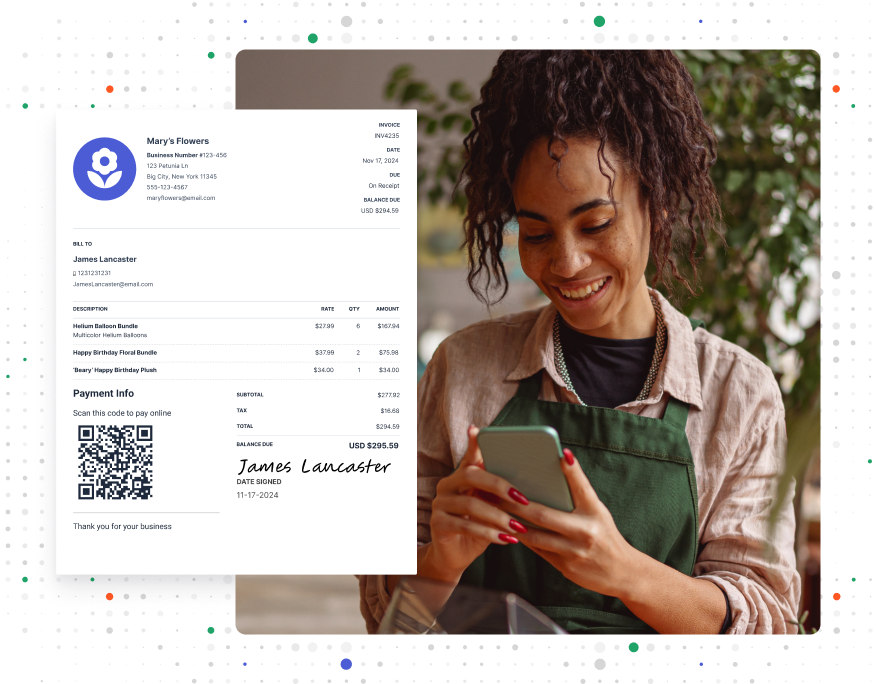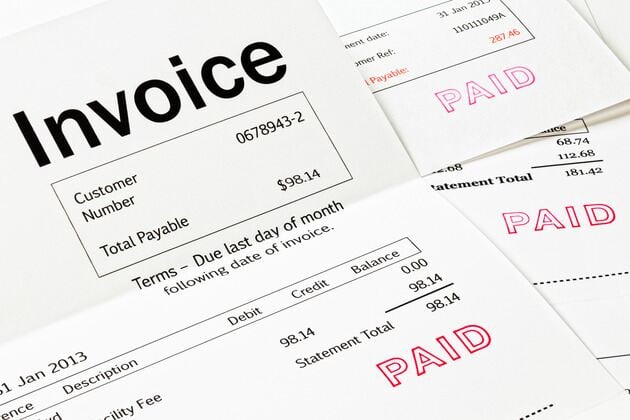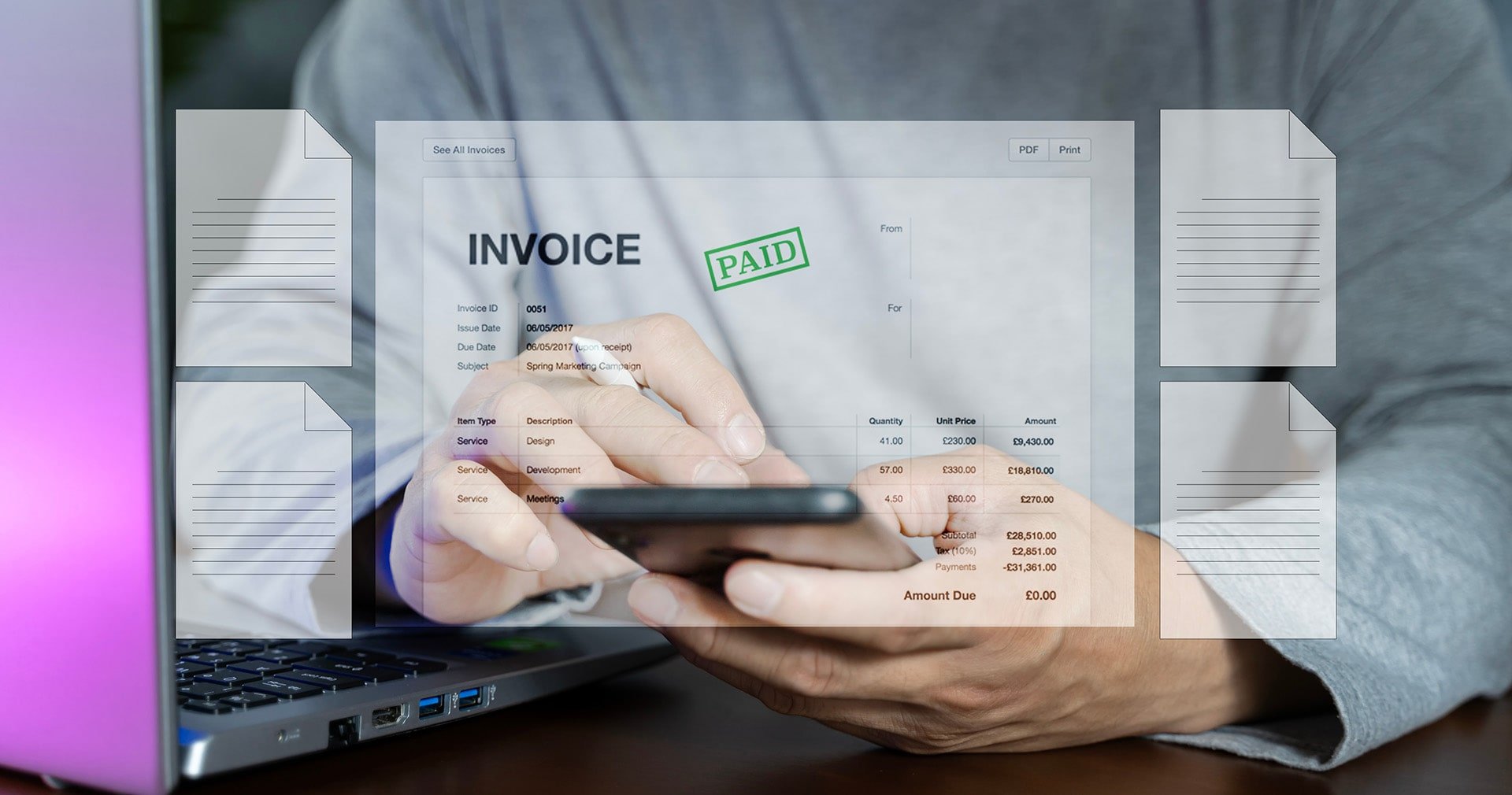How To Add Terms and Conditions on an Invoice

Like a persistent echo, “The check is in the mail” bounces through every business owner’s inbox. Meanwhile, those unpaid invoices pile up, and your time slips away chasing payments.
Transparent terms and conditions tell clients exactly what you expect and when you need payment. They’re your invoice’s rules of the road, keeping payments flowing smoothly and on schedule.
Here’s how to create effective terms and conditions on an invoice. Learn how to turn payment promises into actual revenue.
RELATED ARTICLE — All About Payment Clauses
What Are Payment Terms?
Payment terms are a written agreement between you and your client. Like an instruction manual, they spell out the complete story of how and when you expect to get paid for your work.
While your contract lays out the big picture, your invoice’s terms and conditions zoom in on the details. Every invoice becomes not just a request but also a straightforward guide for completing it. It answers your clients’ payment questions before they even ask them.
Good payment terms and conditions cover all the essentials. They tell clients how many days they have to pay and your accepted payment methods. They outline any early payment discounts that could save your clients money. And they explain those late fees that keep invoice payments coming in by the due date.
RELATED ARTICLE — How To State Invoice Payment Terms (with Example Wording)
Why You Should Include Terms and Conditions on an Invoice

Strong terms and conditions help your business thrive in five key ways:
1. Keep Everyone on the Same Page
Transparent payment terms and conditions keep everyone moving forward together. They transform casual agreements into well-defined rules that guide both parties. This also eliminates confusion about accepted payment methods and due dates. You maintain strong client relationships while keeping your cash flow running smoothly.
2. Build Professional Relationships
Professional terms and conditions show you value doing business right. They demonstrate respect for both your work and your client partnerships. Payment terms that are easy to understand show you’re a business owner who knows how to accept payments professionally. This often leads to stronger, longer-lasting relationships.
3. Set Consequences
Your invoice terms and conditions spell out clear boundaries. They detail late fees, discounts, and payment timelines in a straightforward way. When everyone understands the rules, you have fewer payment disputes.
4. Protect Your Finances
Terms and conditions safeguard your business. They help you manage risk on bigger projects that could strain your cash flow. You can specify payment in advance when needed or set up partial payments for larger jobs. Focus on delivering great work instead of worrying about due dates.
5. Maintain Steady Cash Flow
Well-written terms and conditions streamline the payment process. When clients understand your invoice payment terms and accepted methods, they tend to pay faster. That means more reliable cash flow and less time spent sending out reminders.
RELATED ARTICLE — How To Show a Discount on an Invoice
Types of Payment Terms
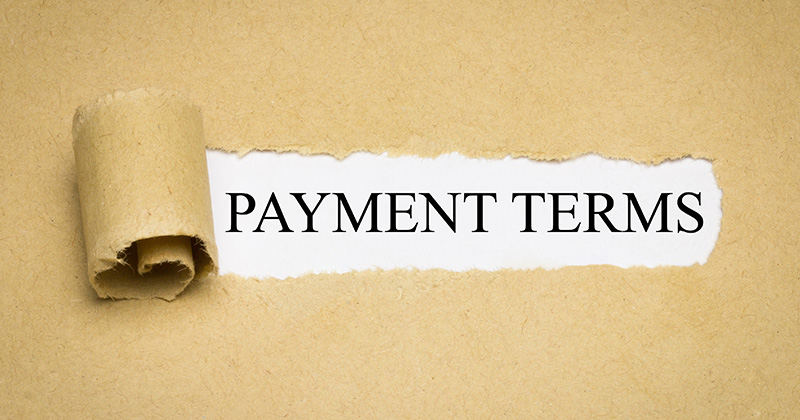
Whether it’s net 30 or cash on delivery, different business situations need different payment terms and conditions. Here are some of the most common:
Standard Net Terms
Net terms are one of the most-used payment term categories:
- Net 7, net 10, net 30, net 60, or net 90 means payment must be made within the specified number of days of the invoice date.
- Net 30 is the most popular across industries, giving clients a full month to pay.
Early Payment Discounts
Discounts encourage faster payments while still offering flexibility with due dates:
- 2/10 net 30 means clients get a 2% discount by paying within 10 days, or they pay the full amount within 30 days.
- 1/10 net 30 (1% discount) and 2/15 net 45 (2% off within 15 days) are also common options.
Calendar-Based Terms
These payment terms keep it simple:
- End of Month (EOM) means all invoices from that month are due on the last day, regardless of invoice date.
- Month Following Invoice (MFI) sets payment due in the month after invoicing, usually by the 15th or 30th.
Advance Payment Terms
Advance payment terms are useful for situations like custom work or first-time clients:
- Cash in Advance (CIA) requires clients to pay the full amount before you start work or ship products.
- Cash With Order (CWO) requires payment when the customer places the order before production begins.
Delivery-Based Terms
These payment terms are directly linked to the actual delivery of goods or completion of services:
- Cash on Delivery (COD) means you collect payment upon receipt of the items or when you complete the work.
- Cash Next Delivery CND) works well for regular, scheduled deliveries and subscriptions. This week’s delivery won’t go out until last week’s is paid for.
RELATED ARTICLE — How To Offer Net 30 Terms (for Small Businesses and Contractors)
Fundamental Elements in Payment Terms and Conditions

Every invoice needs a few key elements to protect both you and your clients. Here are the essentials:
Payment Methods
Outline your payment methods clearly and thoroughly. List every payment method you accept, from credit cards to bank transfers.
Payment Due Dates
Terms and conditions should leave no room for confusion about timing. State if the countdown begins upon receipt, from the invoice date, or after delivery. Also, include whether you count in business or calendar days.
Late Fee Structure
Fair late fee policies help you get paid on time and keep your cash flow strong. Explain exactly when these fees kick in and how they grow over time.
Dispute Resolution
Give clients a straightforward way to address invoice payment concerns. List who to contact about questions and how quickly they’ll respond. Set reasonable deadlines for making disputes and explain your resolution process.
Legal Elements
Link payment terms and conditions to your contracts and any other agreements. Reference any master contracts that affect how invoice payments work.
RELATED ARTICLE — How To Calculate and Charge Late Fees on Invoices
A Payment Terms Example
Here’s a simple example of straightforward payment terms to cement your understanding:
We accept payments via bank transfer, credit card, or PayPal. Payment terms are EOM for all invoices. All invoices issued during the month are due by the last business day. Late fees of 1.5% per month apply to overdue invoice payments.
Please include your invoice number with all payments. We will confirm receipt via email within one business day. For payment questions or disputes, contact [email protected] within 5 days of receipt of invoice. These terms and conditions are subject to our master service agreement.
Once you have your payment terms written, you can add them to your invoice. Invoice templates, like those provided by Invoice Simple, allow you to copy and paste in custom terms.
RELATED ARTICLE — How To Write a Past Due Invoice Email
4 Critical Factors That Affect Payment Terms
Setting the right payment terms and conditions isn’t one-size-fits-all. Consider these key factors:
- Industry Standards. Retail needs instant invoice payment. Construction can make do with longer payment terms. Know your industry’s norms and adjust them to fit your needs when necessary.
- Type of Work. Big projects might need staggered payments to protect cash flow. Custom work often needs upfront payment in advance, while regular services can use standard payment terms and conditions. It all depends on the type of work.
- Client History. New clients might need stricter payment terms and late fees until trust builds. Long-term clients who pay on time can earn more flexible terms and conditions.
- Your Business Needs. Match payment terms and conditions to your own expenses. If you have regular payroll or supply costs, your terms need to keep enough cash flowing to cover them.
FROM ONE OF OUR PARTNERS — 7 Ways To Increase Cash Flow for Your Business
6 Steps for Creating Invoice Terms
Clear terms and conditions start with good planning. Here’s how to create them:
- Know Your Business Needs. Review cash flow patterns and expenses. Your payment terms need to bring in money when you need it most.
- Get Legal Input. Have a lawyer review your terms and conditions. Even wording changes that seem small make a big difference in protecting your right to get paid.
- Back Terms With Contracts. Link your invoice payment terms and conditions to signed agreements. This makes them legally binding and easier to enforce.
- Double-Check The Details. Verify client information and payment requirements. Small mistakes can lead to payment delays.
- Keep Language Simple. Skip the legal jargon. Clear, straightforward payment terms get better results than complex ones.
- Stay on Schedule. Send invoices promptly to start the payment clock. Late invoices often mean late invoice payments.
FROM ONE OF OUR PARTNERS — The 9 Essential Elements of a Small Business Invoice
3 Pro Tips for Creating Terms and Conditions on an Invoice
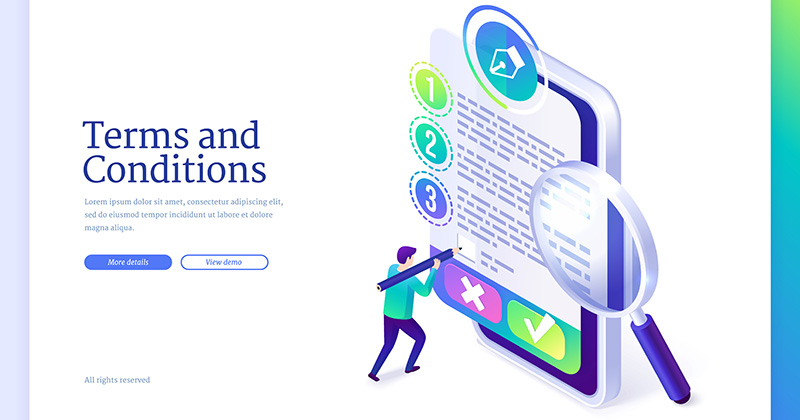
Use these strategies to make your payment terms even more effective:
- Test Different Terms. Try offering early payment discounts to some clients while using late fees with others. Track which approach gets you paid faster and helps your cash flow the most.
- Build Payment Bridges. Talk about your terms and conditions before sending the first invoice. When clients understand your payment terms from day one, they’re more likely to pay on time and less likely to get confused.
- Automate Everything. Create templates for consistent terms and conditions. Use digital invoicing software to send automatic payment reminders, track invoice payments, and record terms for each client. This prevents lost invoices and keeps your cash flow steady.
Make Invoicing Easy With Invoice Simple
Spend less time tracking down unpaid invoices and more time getting paid for your hard work. It all starts—and ends—with Invoice Simple.
With Invoice Simple’s software, you get notified when your invoices are read and track when they are due. Keep a record of clients and track your monthly income with built-in reporting that you can easily share with your team or accountant. Manage all your finances in one place.
Automate Your Invoicing TodayStart Your First
Invoice Today
Create customized and professional
invoices and connect with clients
